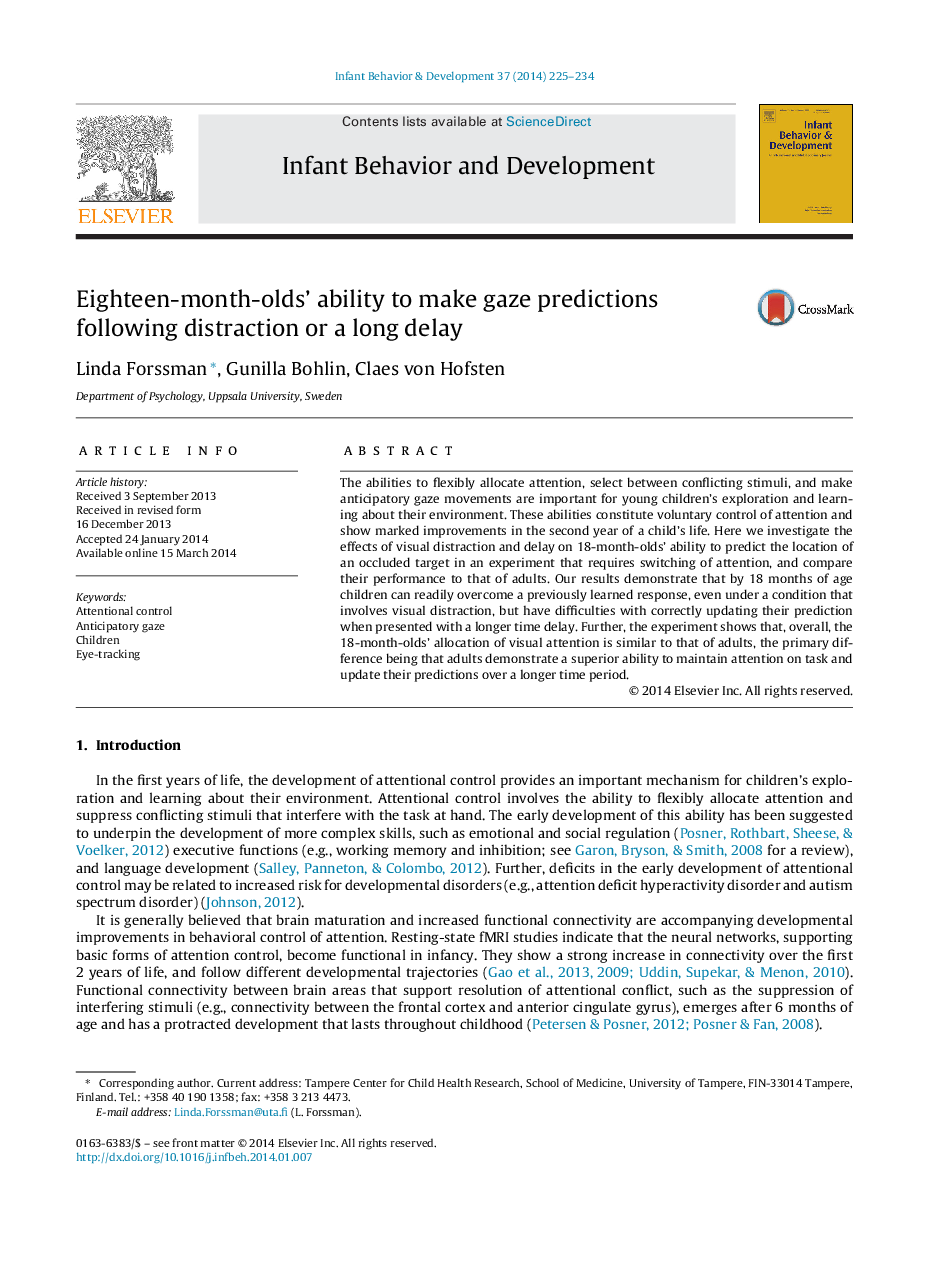| Article ID | Journal | Published Year | Pages | File Type |
|---|---|---|---|---|
| 917186 | Infant Behavior and Development | 2014 | 10 Pages |
Abstract
The abilities to flexibly allocate attention, select between conflicting stimuli, and make anticipatory gaze movements are important for young children's exploration and learning about their environment. These abilities constitute voluntary control of attention and show marked improvements in the second year of a child's life. Here we investigate the effects of visual distraction and delay on 18-month-olds' ability to predict the location of an occluded target in an experiment that requires switching of attention, and compare their performance to that of adults. Our results demonstrate that by 18 months of age children can readily overcome a previously learned response, even under a condition that involves visual distraction, but have difficulties with correctly updating their prediction when presented with a longer time delay. Further, the experiment shows that, overall, the 18-month-olds' allocation of visual attention is similar to that of adults, the primary difference being that adults demonstrate a superior ability to maintain attention on task and update their predictions over a longer time period.
Related Topics
Life Sciences
Neuroscience
Behavioral Neuroscience
Authors
Linda Forssman, Gunilla Bohlin, Claes von Hofsten,
